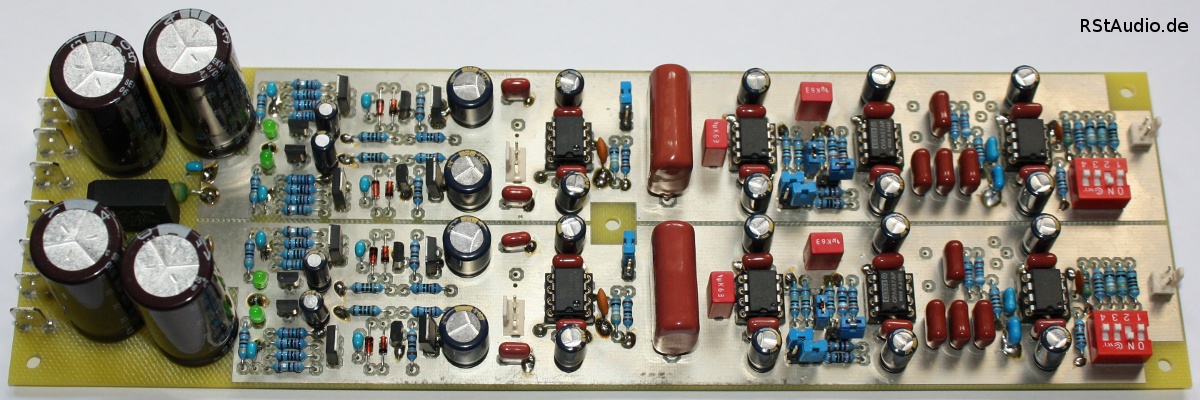
this project / page is under construction
Table of Contents
Introduction
2011/11/14
I’m busy myself since a long time with the XOno, know these circuit inside out and count myself lucky to have it in use. Nevertheless since a long time I think of a constrution of an own phono preamplifier. To gather more experience with such designs I decided to build a couple of phono preamp’s. I want to begin with a simple design based on operational amplifiers. Based on this basis design in combination with the comparison to the XOno as a reference I want to modify or even totally change the circuits. Finally it will become an interesting and exciting development which will need of course a lot of time.
Phono Preamplifier with OP’s – PVV1
2011/11/15
As I wrote in the introduction I want to start with a more simple design based on operational amplifiers. At this it is certainly attractive to use different types. The boundary conditions for the design are:
- operational amplifiers as active elements
- passive RC RIAA compensation
- optional AC coupling or servo control for the offset compensation
- power supply with shunt regulators
- symmetrical and single ended outputs
This phono preamp has a classical concept with two stages and a passive RIAA network inbetween. The maximum overall gain in relation to 1kHz is nearly 70dB. Therefore the preamp is able to drive MC pick-ups. In the first stage I use an AD797 from Analog Devices. This OP-amp has an external compensation for a Distortion Cancellation and a Bandwidth Enhancement so that the replacement with another type is only allowed with some minor changes of the circuit – the compensation capacitors have to desolder. The second stage however allow a simple replacement of the operational amplifier. By the variation of the amplification factor of this stage the overall gain of the phono preamp can be adjusted. To get a symmetrical output signal I use a DRV134 from Texas Instruments at the output.
As you can read in the boundary conditions I include a variation of the circuit. The offset voltage the circuit will inevitably have because of the high gain have to be compensated. This can be reached with an AC coupling – a capacitor in the signal path – or with an active servo control. Both is possible with these circuit and of course it is interesting how both techniques influence the sound of the preamp.
- Overview of the Phono-Preamplifier
- Schematic of the MC Input
- Schematic of the Output and Servo Amp
- Schematic of the Power Supply
- Top Overlay of the Board
PVV1 Phono Preamp
Review
The results compared to the XOno are promising. This phono preamp is not a danger for the XOno, but when you look at the simplicity of the schematics the results are remarkable. The PVV1 belongs certainly not to the worst systems on the market. The answer to the question of using the AC coupling or the servo amp I have a clear preference towards the AC coupling. Thus to build an OP based phono preamp with a single ended output in a very good quality is possible with only 2 operational amplifiers and I’m sure improvements are possible.
